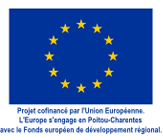





Our desktop publishing expertise
Desktop publishing:
Until the early 1990s, the outputs of the computer programs were produced as list or in a more sophisticated form by superposing the data from these programs on "reprinted" themselves often related to listings (bundles).The emergence in early 1990 of laser printers as production printers replacing impact printers has uncovered specialized software packages for the implementation of variable data on production outputs including printing overlays themselves One of the first desktop publishing software that has appeared in the 1990s was the result of the porting to "open"OS (Unix, Windows) of an older Xerox software dedicated to mainframe (MVS). It is noteworthy that from the early 1970s, this software was capable of producing (with variable data) the equivalent of a newspaper like the Times. It still took twenty years to desktop publishing to allows us to use floating body fonts rather than fixed body fonts ; that is to say, "m" larger than "n" themselves wider than "i". It also took twenty years to expect that we can draw lines and tables on a production output not using the "=" (horizontal lines) or the "!" (vertical lines).
Paul Lahmi, leader of SOOD has accompanied Xerox as Project Director in the early 1990s in this revolution of the switchover from analogue to digital. One of the first desktop publishing projects that has been developed was for the billing of a "utilities" (distribution of water) where the invoice had been redesigned to integrate histograms and dialog boxes. And especially, thanks to the color show that most of what was paid by the consumer taxes... So this first desktop publishing app had raised awareness to the company that the bill was a rare opportunity to communicate with customers...
Since then desktop publishing must take into account that, for mass production much of it will not be printed, or at least not on the central production printers. For example, under current desktop publishing solution, an invoice must be printed for traditional mailing, or produced as a PDF to be sent by email or sent directly to the client's electronic vault. In some cases, the invoice is materialized in paper or electronic form at the request of the customer, when he thinks about it...
Today the choice of a desktop publishing solution binds the company for many years and has an impact on all related technologies. The choice is not limited to the selection of a desktop publishing package. We must consider the impact of the document on business applications, it's connection to ECM projects, workflow, digital trust (electronic signature, electronic safe...), archiving, paperless, CRM, etc.
Sood's engineers have already ensured successfully high-tech services for international telecommunications company in Third Party Application Maintenance for applications including Desktop Publishing and Electronic Signature, internet technologies. Nearly $ 10 billion has been billed by our client in eight years without any major incidents with our services.
